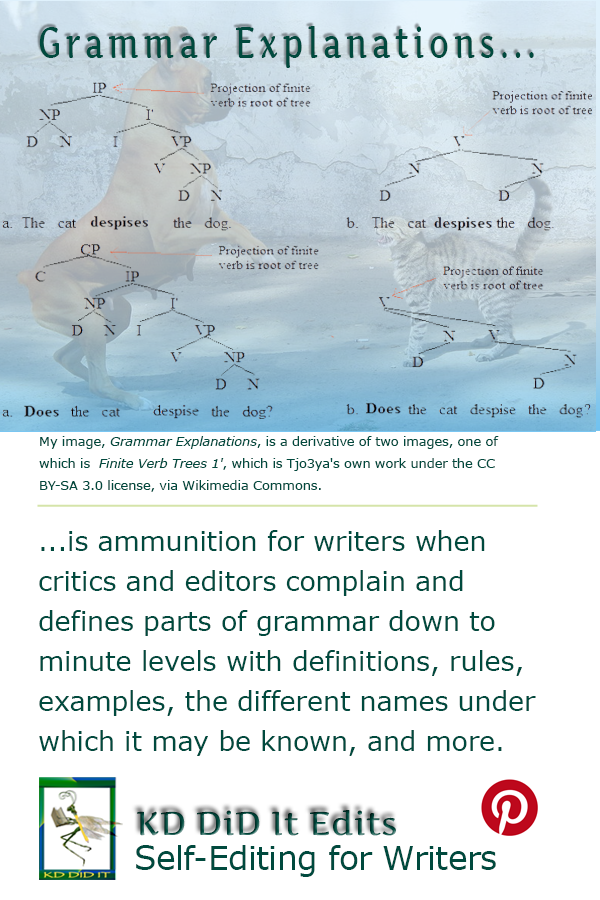The Grammar Explanations are background information for the self-editing writer. What you know under one term may have several other terms that all mean the same thing. When working with an editor, it can be frustrating as you try to understand what s/he is saying. For more detail on the “anatomy” of a grammar explanation, see below.
The Explanations also make a good reference tool for writers, as they detail the different kinds and types of individual bits of grammar from adjectives to nouns to verbs to complements and combining forms to clauses and phrases; the make-up of sentences; the hetero-s and homo-s; the essential and non-; appositives and idioms; the possessive to the predicative; qualifiers, identifiers, and determiners; and, so much more.
Definitions, cautions, rules, and examples for every situation as well as those bloody also-known-ases are all included.
Explore the listings below, if only to know what you’re up against.
Grammar Explanation Posts:
Absolute Words
Acronyms & Initialisms
Active vs Passive Voice
Adjective
Adverb
Ampersand, &
Antecedent
Appositive
Article
Attributive
Clause versus Phrase
Clause, Conditional
Clause, Elliptical
Clause, Finite or Non-Finite
Clause, Independent
Clause or Phrase: Introductory
Clause, Non-Restrictive vs Non-Essential
Clause, Relative
Clause, Restrictive vs Essential
Combined Form
Complement
Compound Word
Conjunction
Paranyms
Parenthetical Elements
Paronyms
Participle
Particle
Phrase, Absolute
Phrases, Transitional Words and
Plurals
Polysemy
Possessive
Predicate
Predicative
Prefix
Preposition
Pronoun
Subject-Verb Agreement
Suffix
Synonym versus Antonym
Synonyms Can Be Cute
The Sentence (simple, complex, compound +)
Anatomy of a Grammar Explanation
While the posts are always being updated, the basic structure is the type of grammar followed by its general definition and then a TOC of links to the variations on the grammar that follow. Color is used in a hierarchical step-down to try and corral a type of grammar with its sub-types to make it less confusing. Most of them have examples of how that bit of grammar is used in a sentence.
These posts are in no way complete, and I’d love it if you’d send your own suggestions and comments to make it better . . . I don’t necessarily promise to include them, but . . .
If you know someone who could use some help with their own grammar questions, consider subscribing to KD Did It, if you’d like to track this self-editing aid for future updates.
Pinterest Photo Credits
Finite Verb Trees 1‘ is Tjo3ya’s own work under the CC BY-SA 3.0 license, via Wikimedia Commons.
Revised as of 24 October 2024
By: Kathy Davie

